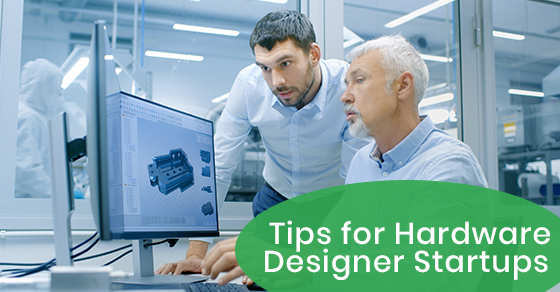Tips for Hardware Designer Startups
Designing, fabricating, and launching a new hardware component can be a very challenging task; especially when the company involved is a startup. Startups in particular need to strongly factor in risk as well as costs in order to have a chance of success, and as such, should prioritize minimizing both the risks and costs involved in hardware design.
Here, we discuss some simple yet effective tips that you can use to help reduce your hardware design costs, all while reducing the risks incurred so that your product launch has a good chance of being successful amid a glut of competitors.
Utilize Modules Whenever Possible
Electronic modules should be utilized as often as possible for the most complex functions of your hardware. By doing so, you will reduce the risk involved while also saving money in the process. For those unaware, an electronic module consists of an assembly of self-contained electronic components that performing a certain function that is integrated into another product.
When an electronic function is fabricated there are two routes that can be taken. The first is to use a module while the second option is to fabricate a custom circuit. In most cases, a combination of the two results and it is very rare to have a product launched that only uses modules. However, there are a few proof-of-concept prototypes based on certain development systems — such as the Raspberry Pi — that are based wholly on modules.
We would recommend that you design a custom circuit for the microcontroller, which serves as the “brain” for most products. The custom circuit can also be used to perform many secondary functions that are relatively low-risk; including, but not limited to, LED displays, alarms, and power management. You can then opt to use modules for the more complex functions of your hardware, such as high-speed microprocessors, GPS, Wi-Fi, graphics controllers, and Bluetooth.
A module that is self-contained can be integrated into the same printed circuit board alongside the circuit that you had custom designed. Modules have a myriad of benefits, such as reducing your development costs, mitigating risk, and streamlining FCC certification. Modules are especially advantageous for wireless functions, and will also allow you to get your product to market faster, giving you a marked competitive edge.
Find the Right Manufacturer
A cheap and easy way to obtain financing is to get better payment terms. It is also important to note that cash flow will become a pertinent issue as soon as the manufacturing of your product takes place. Furthermore, if you opt to sell your product through retailers then you will need to wait to be paid for 1 to 2 months. Or, if you decide to sell online then you will also likely have to wait for 30 to 60 days before you sell your inventory.
Regardless of the path you choose, you will not receive payment immediately. The problem with not receiving immediate compensation is that most manufacturers will require that you provide them with at least a partial payment upfront. Partnering with a manufacturer that is willing to give you better payment terms is of the utmost importance, as you will need to finance manufacturing during the interim period in order to stay afloat as a startup.
Start with a Provisional Patent
Many startup companies worry that the big multinational conglomerates will try and eliminate them by copying their ideas. As such, many entrepreneurs make the common mistake of focusing on obtaining a patent. In reality, however, the vast majority of patents will never actually make it to market, and trying to obtain a patent is both time consuming and very expensive.
However, you can try and obtain a provisional patent instead, which will protect your intellectual property for 12 months. Then, during the trial process, you can test the product thoroughly to determine if it is worth the complexity and cost of acquiring a full patent, as you will be required to get a full utility patent at the end of the 1-year term.
Trademarking your hardware is yet another way to reduce your hardware design costs. That is, try and come up with a clever title for your hardware and then trademark it. Trademarking can provide some protection for your hardware and is relatively inexpensive, generally only costing a few hundred dollars.
You also do not have to hire a lawyer to obtain a trademark, and they are easier to obtain than a patent. In sum, patents are not the be-all-end-all, especially for a startup company. Your top priorities should be product and customer development, as well as marketing. In the end, your hardware ideas will have very little to no value unless you are able to grow your company and turn it into a reputable and profitable brand.
For more information about designing custom hardware design products, call Circuits Central at 888-821-7746 or contact us here.

